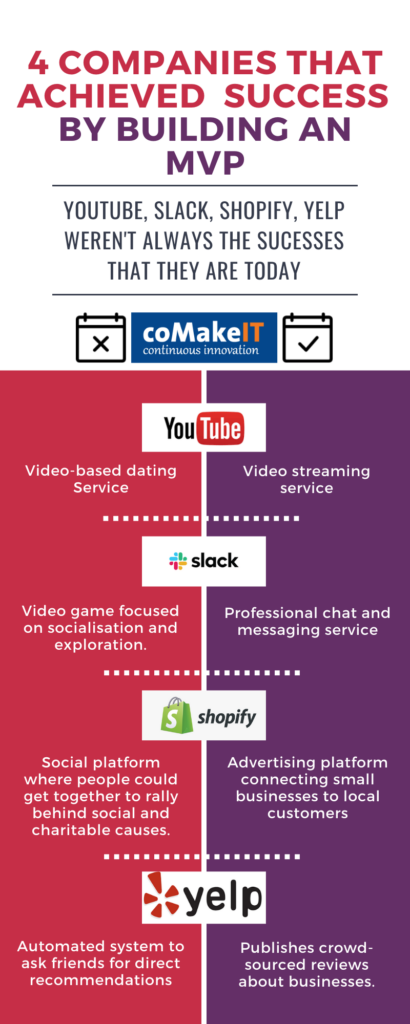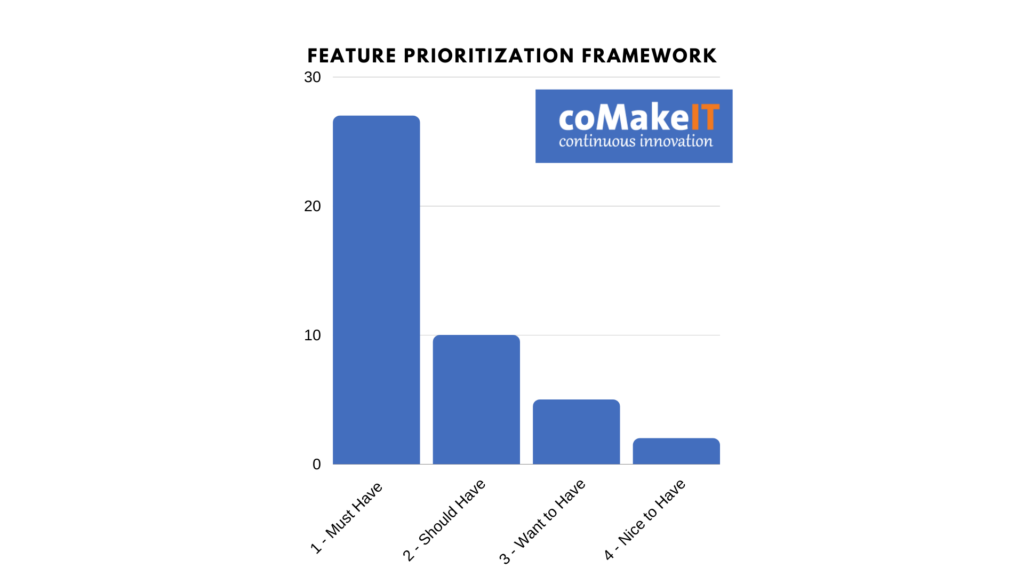Building a product is hard. Building a product that will help you capture markets is the most important investment. According to an analysis of the reasons why a product may not succeed, it has been concluded that running out of cash and a lack of clarity in understanding customer needs are some of the more prominent ones.
As a start-up founder or a C-level executive, you know what an MVP can do for you. However, a Minimum Viable Product (MVP) is only as good as the goals and objectives for which it is built. Having a clear objective/goal for the MVP is likely to help you derive maximum return on your investment.
Top reasons for building the MVP
Knowing what we want our MVP to accomplish is crucial to the success of our development efforts. From our experience, there are three levels that you may want the product to function at, each stage helping you reach closer to your ultimate goal of building products/services customers love. They are:
- Minimum Showable Product – Gets the user curiously enlightened about what you have to offer. Allows you to listen to their questions which can uncover requirements that were previously not considered. Would be the first time your abstract idea turns into a clickable demo.
- Minimum Testable Product – Allows a small set of users to experience your product and provide initial feedback. This allows users to begin ideating with you. Helps the user visualize the potential of your idea.
- Minimum Usable Product – A larger number of beta users can use the product and provide feedback that wasn’t possible in the testing phase. At this stage, users see a visible improvement in their life due to the usage of your solution.
Stages of the MVP journey
Based on our work with numerous startups and ISVs, we’ve seen that one of the following three scenarios play out:
- If the hypothesis is completely correct and people have a favourable consideration of our offering – development continues
- If the hypothesis is only partially true – the feedback from the customer is incorporated and appropriate changes are made to the start-up idea
- If the hypothesis is refuted – In this case, failure is detected early before significant resources are invested into the project. This can save you up to 90% of the budget allocated
Chances are, out of all the extremely successful startups that we see today, none of them would have become the market leaders in their industry if they chose to be rigid on the first idea that struck their mind.
The reason they are so successful now is because they were willing to listen and fundamentally change their business when their original idea didn’t meet the needs of their market. They held their ears to the ground and were nimble enough to pivot.
Some successful MVP examples:

How to build an MVP in the right way:
At coMakeIT, we believe building an MVP is a 3-step process. This is what the building process looks like:
- Define the idea: The MVP must perform an important function in the life of your customer. In this stage, we decide on the key features of the product. We take the help of a Value Proposition Canvas (VPC) to systematically figure out the important aspects to consider.
- Design the prototype and user flow: Involve experienced design professionals (UX) to build prototypes incorporating features for data collection and feedback. Choose the best one to implement.
- Develop the MVP: This is the realization stage. Scoping the MVP right is critical. It helps you to phase your MVP to keep it in line with the desired outputs:
- Showable MVP
- Testable MVP
- Deployable MVP
Leveraging our domain expertise, product thinking, and innovation accelerators, we use widely accepted frameworks like VPC and MoSCoW with an agile delivery model to help our clients achieve faster time-to-market and reduce risks of new technology adoption.

feature priortization framework At coMakeIT, we’ve helped numerous start-ups and ISVs bring their idea to life in the most efficient way – with minimum time, cost and UX. We use our unique ‘Product 1.0’ service that leverages our expertise in technology, product development expertise, process knowhow, risk mitigation and industry know-how and access to top-talent to deliver sustainable value to our partners.
Consider the case of a Dutch ISV, that benefited from coMakeIT’s unique engagement model.
Problem:
Three years ago, a start-up came to us with an idea of a solution to measure social impact management that can be used by public/private enterprises as well as the non-profit sector.
Idea Validation and MVP:
From there, coMakeIT stepped in and delivered the following:
- Put together a customer journey map
- Helped the customer define user stories and use case scenarios for different groups
- Established a 4-member team with agile product mindset to work exclusively
- Designed and delivered an architectural blueprint for the solution
- Post the development of an MVP with a set of must-have features in around a month, developed and released the 1.0 version of their SROI (Social Return on Investment) tool within the first 6 months.
- Developed and deployed the product as a SaaS offering.
Post successful MVP:
The initial team that coMakeIT put together for this has been continuously maturing and working on executing its product roadmap. Over the years,coMakeIT has proven the unique advantages of its service delivery model, that has continued our long-term partnership with this customer.
With our product development DNA, unparalleled insights into agile processes, and passion for facilitating organizational scaling, our strategic engagement framework is uniquely positioned for ISV start-ups.
If you are looking for a mature engagement with service providers that is much more than outsourcing and offshoring, you can provide your contact information below and our team will reach out to you.





